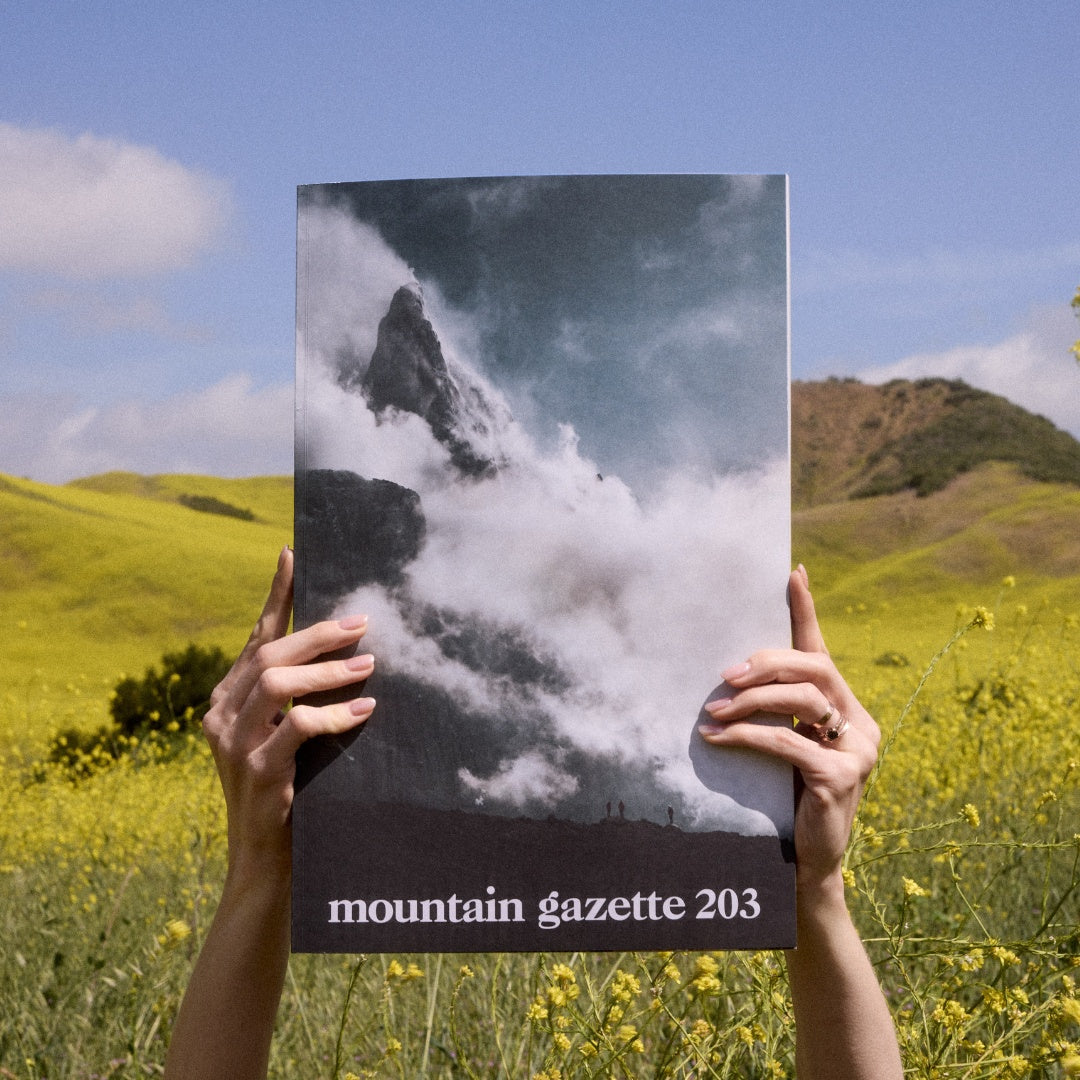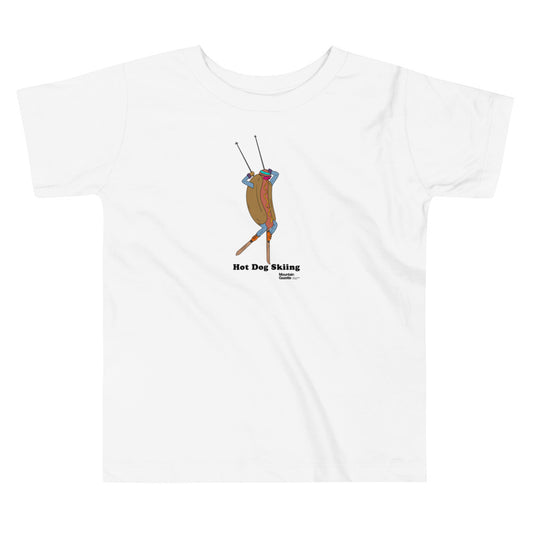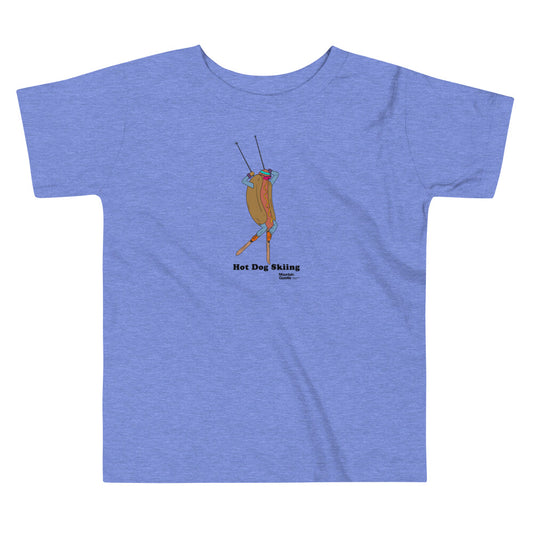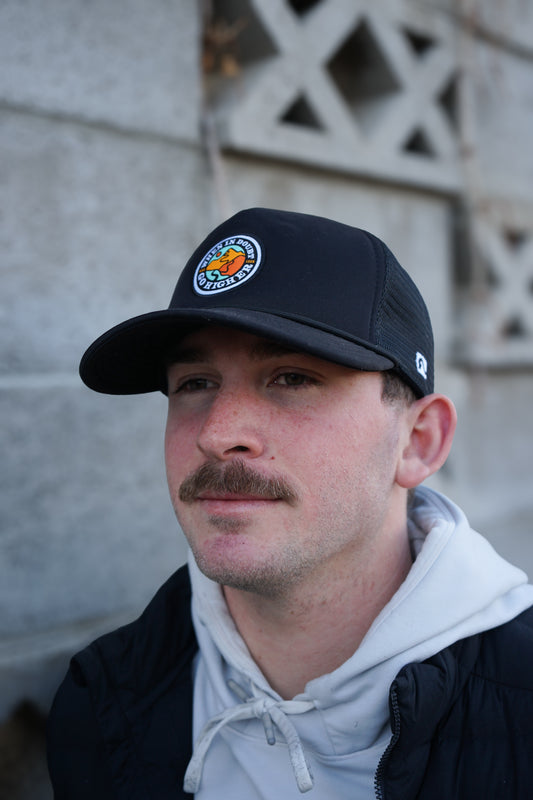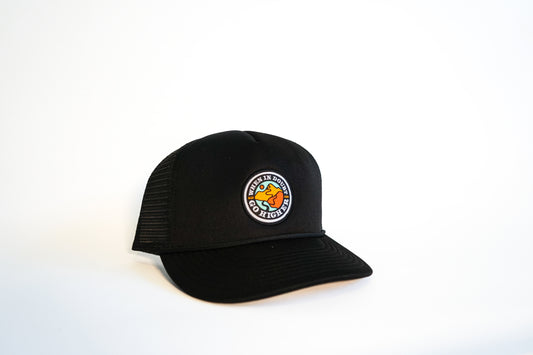In Part One of this series, we traveled north. The Yukon is still fresh in my mind—my legs are sore, and I’m not entirely convinced nightly showers are worth the effort. Part Two moves south, where the past walks beside the present—and the bison have come home again.
Alberta, it turns out, is emerging as a leader in Indigenous tourism—where Indigenous-led experiences aren’t a side note, but a growing movement backed by provincial investment and real global curiosity. I wanted to see what that actually looks like. Because if there’s one thing Mountain Gazette readers know, it’s that buzzwords don’t always hold up in the wild.
Leaving the mountains felt like a small heartbreak, but trading peaks for open roads comes with its own kind of thrill. After picking up my rental car at the Edmonton airport, I hit a long stretch of highway flanked by rolling plains.
Tonight, I will stay at Elk Island Retreat, a family owned private campground 40 miles outside of Edmonton proper. On its 60-acre grounds is a collection of cabins, yurts, RV sites, and geodomes.
Glamping can mean many things to many campers. To the privileged middle class, it might mean an RV or trailer outfitted with toilets and appliances. For the immodest millennial, it’s all about that #VanLife—maybe a 1970 GMC with the bubble windows and Murphy bed. For me, it’s sleeping in a converted school bus.
Shweta Hanneman, half of the retreat’s second-generation co-owners, believes luxury can be generous without being showy. After intros, she shows me to my cabin, then leads me to a small hollow in the woods where a luxury picnic is set up. “Everything you see is sourced from local artisans and farmers,” Hanneman says as she pours me a glass of red. “I spend hours picking what goes on the board. I love it.”
Between this bougie spread, a plush bed, and the one-way mirror ÖÖD House sauna, I feel like a princess in the glamping court. It’s indulgent, yes, but there’s also a strange grounding in the way luxury and wilderness coexist—and I’ll admit, I kind of love it.
The next day, after completing my first—and only—load of laundry, I say goodbye to Nate and Shweta and set out for the road again, continuing north. Out here, the fields are dotted with barns and silver silos. Roadside signs advertise farms selling Taber corn and peaches. Per my itinerary, I am to meet Monique Collins, Cree Knowledge Keeper and the distillery’s Indigenous liaison, for lunch.




Indigenous Tourism
I pull onto a gravel dirt road that leads me to Rig Hand Distillery, a family-run outfit producing vodka, rum, whiskey, gin, moonshine, and coffee cream liqueur.
“We really want people to have a place to come, to sit, to tell stories. That’s really what honoring indigenous voices is about,” says Collins.What struck me most is how intentional it all feels—this isn’t tourism slapped on top of culture, it’s culture shaping tourism, with communities setting the pace and the rules. At its core, Indigenous tourism ensures that Indigenous communities are both leading and benefiting from the tourism of their lands and cultures. For travelers, it offers authentic, culturally immersive experiences led by Indigenous communities where they can engage with traditions, hear ancestral stories, and witness the culture firsthand.
After adopting an Indigenous reconciliation program, Rig Hand hired Collins, who hosts classes, ceremonies, and workshops in an impressive 35-foot teepee located on the distillery’s campus. She shows me how to make a traditional Medicine Bag, made from swatches of leather and stitched with sinew. Inside, we place the four sacred medicines–tobacco, sweet grass, sage and cedar–which, Collins tells me, provide protection and healing.“The land offers us so much,” she says. “Most people have a desire to connect to the land … they just don’t know it.”

Monique Collins, owner of Dragonfly Spirit CreeAtions
Métis Crossing
My next stop is another 30 miles north. Just before the prairie blends into the northern boreal forests, I arrive at Métis Crossing—Alberta’s first and only Métis cultural interpretive centre. Here, the land isn’t just a backdrop; it’s part of the story, and guests move through it guided by Métis knowledge keepers and Indigenous-led traditions.Built on traditional river lots along the banks of the North Saskatchewan River, Métis Crossing sits on a section of the Old Victoria Trail, part of a trading route that ran from Fort Edmonton to Fort Garry in Winnipeg, Manitoba.
Métis Crossing is a place of pride for its people, where they not only share culture and tradition but also give visitors the chance to experience Métis life firsthand. Its wide range of workshops and activities includes canoeing, beading, harvesting, trap-setting, and archery, while guided tours offer opportunities to immerse oneself in outdoor adventures. (In winter, that might mean strapping on Métis-style snowshoes, setting snares, building survival shelters, or tracking animals across the snow.)
Known as Otipemisiwak, or “The People Who Own Themselves,” the Métis are a “post-contact” Indigenous people, born from the unions of French and Scottish fur traders and First Nations women. Their culture is distinct from both their European and Indigenous ancestors, yet remains a vibrant blend of the two—expressed through the unique Michif language, intricate floral beadwork, the symbolic Métis sash, and the lively traditions of fiddle music and the Red River Jig. It wasn’t until 2016 that their distinct Indigenous rights were officially recognized by the Canadian government.


First on my itinerary is a traditional plant walk across the grounds. I join a group of three along with the Metis Cultural Interpreter who is to be our guide.
“This is ‘white man’s foot,’ or plantain,” she tells us, pointing to rosettes of veined, oval leaves at our feet. “Many consider him a weed, but he’s full of seeds for stews and baking, and the leaves are edible.” To the Métis, plants are considered family and are referred to as ‘he’ or ‘she’—never ‘it.’Anti-inflammatory nettle. Immune-supporting clover. Even the dandelion, which can help detoxify the liver and be made into countless skin balms, speaks to the natural healing power of plants.





Admittedly, what I was looking forward to most on this visit was seeing bison.
At one point—prior to European colonization—bison were the widest-ranging large mammal in North America, numbering between 30 million and 60 million. Hundreds of thousands once moved together, their hooves drumming the land with the sound that would become their namesake—“Thunder of the Plains.” (Legend has it that a settler once rode horseback through a herd of bison so massive, it took him five days and five nights to get through.) But by 1889, only 512 plains bison remained in North America following the ravages of westward expansion.
To the Métis, bison were more than just sustenance—they were the cornerstone of society, held deep spiritual significance, and even shaped Métis democratic and judicial practices through the “Laws of the Buffalo Hunt.”“The last time bison, or ‘bufloo,’ roamed wild here was 1865,” Lilyrose Meyers tells me. As the Knowledge Keeper at Métis Crossing, responsible for preserving and sharing Métis cultural practices, she explains, “Every spring and fall would be marked with a hunt and a major Métis gathering, but then we stopped being allowed to hunt and the land changed from prairie to bush. Seeing the buffalo back is an important ancestral connection for my people.”
 Lilyrose Meyers, Knowledge Keeper at Métis Crossing
Lilyrose Meyers, Knowledge Keeper at Métis Crossing








What’s Worth Seeing
The point of a media trip like this, I am learning, is simple: Show outsiders what’s worth seeing. And what Canada chose to show me was telling—wild spaces that resist easy access, and Indigenous stories that demand to be heard. From the Yukon to Alberta, I encountered communities and landscapes that value resilience, knowledge, and connection to the land—things that don’t happen by accident.
What I saw is that—imperfect as it likely is—Canada is leaning into, and actively promoting, Indigenous tourism hard (the sector generated an estimated $3.7 billion in revenue in 2023 and contributed $1.6 billion to GDP).
None of it is perfect, but all of it feels intentional—and I can’t help but compare it to the state of things back home.
Where Canadian wilderness still shapes a national identity, American landscapes feel perpetually under siege from development, extraction, and ‘for sale’ signs awaiting the highest bidder. Where Canadian cultural spaces gather, hum, and pass on tradition, community life in the States so often feels fractured.
And while yes, this trip was a set of curated experiences, the presence of Métis, First Nations, and Inuit voices felt ubiquitous everywhere I went—distinct, but not separate from the larger story of the country. In my travels across the U.S., Indigenous presence has felt more like a footnote than a thread running through the larger narrative.
In the U.S., the number of Indigenous tourism businesses represent only a small fraction—about 1.5%—of the total tourism economy.
But it’s not just that: Recent cuts and policy changes under the Trump administration have slammed Indigenous tourism and cultural programs. Federal budget cuts, grant freezes, and park shutdowns have stalled programs that not only sustain tribal tourism and cultural preservation but also put critical areas—like health, law enforcement, education, and essential social services—at risk.
This disparity raises important questions about national narratives and priorities: What does a country choose to highlight, and what does it overlook? Canada’s emphasis on Indigenous stories and sustainable practices offers a compelling model for how tourism can be a force for cultural preservation and community empowerment. The stories we choose to tell—and the ones we leave untold—shape our collective identity and our future.
Right now, Canada is showing something rare: Wild spaces that still inspire awe, leadership that is shared, and communities that know how to carry their stories forward. It’s a perspective worth noticing—and, honestly, worth following.



